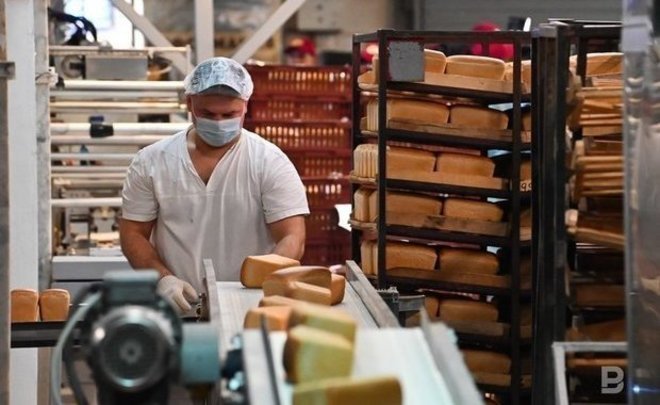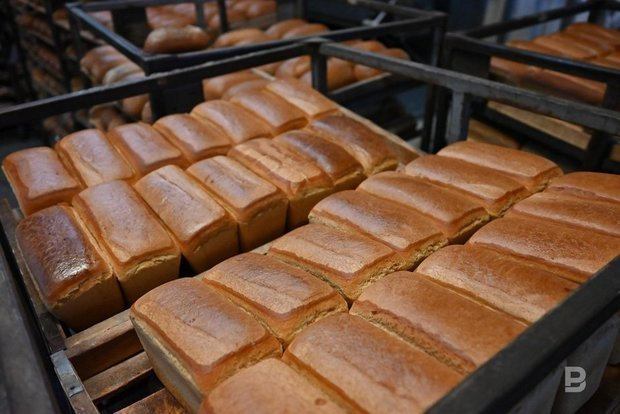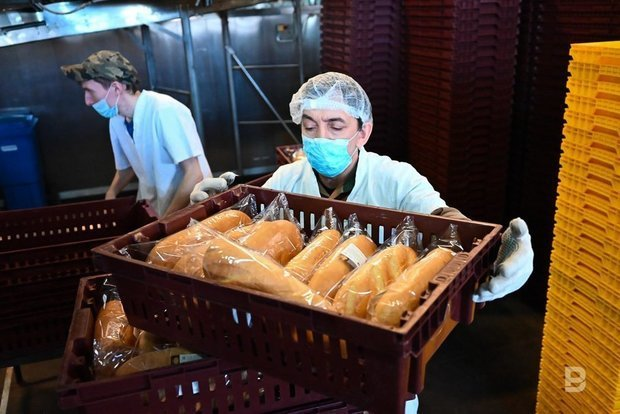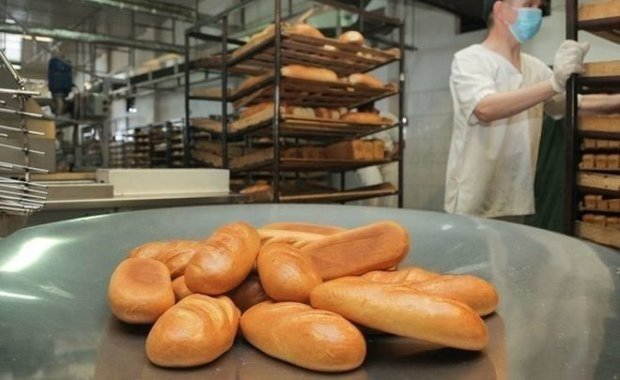Albert Latypov: ‘Any fluctuation in the world has an impact on the bread baking business’
The new owner of the Vasilyevsky Bread Factory and another two bakeries about problems and prospects of the sector in 2023

Russians started to eat less bread and baked goods — consumption on average has dropped by more than 5kg since 2019 and totalled 90.1kg a year per person. The tendency for reduced consumption of pastries has been seen for several years, and analysts forecast that consumption of bread and confectionary products can decrease by another 3%. Two reasons are cited — a commitment to healthy eating and a desire of low-income consumers to save money. In an op-ed column owner and Director of the Vasilyevsky Bread Factory and another two bread bakeries, businessman from Cheremshan District Albert Latypov explains how Tatarstan bread bakeries survived last year, what prospects 2023 opens, why bread prices are growing and its production profitability is, in contrast, falling.
Expensive feedstock and suppliers’ manipulations
The last year turned out to be tough enough for the bread baking sector — there was a plethora of problems bakers had to face. It is the exit of foreign feedstock suppliers from the Russia, staff deficit and lower purchasing power and, as a direct consequence, a fall in demand. A lot of consumers switched from the premium to the middle segment while those who purchased food for a middle price refocused their budget on economy class. So-called hard chains — discounters — are rapidly gaining momentum today for a reason.
Federal chain stores started to change price tags for our finished products much later even though feedstock prices surged in spring. Interestingly, those bread bakeries that sell it below its prime cost, which directly influences profitability, receive state support. Also, not all products but just “social breads” — white, rye and white flour bread — are compensated.
In addition, suppliers started to manipulate, that’s to say, even when market feedstock price began to decrease, they lowers prices for main products for bread and other product manufacturers very unwillingly.
If you remember, once the dollar rate skyrocketed to 200 rubles in spring. Then feedstock price hiked, but when the currency became twice cheaper, suppliers didn’t hurry to sell it cheaper.
“No matter how much businesses are indignant, key players proved their resistance”
The exit of equipment suppliers for the bread baking industry, for instance, made in Italy from Russia is another problem — a brainchild of 2022. Yes, today one can buy spare components for this equipment, but they will be shipped for from three to six months via parallel import, but it is also important that its price rose repeatedly. For instance, if an Italian furnace burner used to cost 150-200,000 rubles, now it does from 600 to 900,000 rubles!
The share of foreign equipment in the two Cheremshan enterprises is just about 20%, in the Vasilyevsky Bread Factory it is a bit higher, some 40%, but we have it and it works great, but anyway needs to be repaired, replaced some parts from time to time.
As a patriot, I advocate Russian equipment — it is cheaper, we are familiar with it, understand that it is easier to find spare parts for it. Also, our producers of furnaces or other production lines for bread bakeries try to catch up, conquer the Russian market occupying vacant niches.
As a result, given all these factors, the productivity of big bread bakeries reduced, I think it did little in my enterprises — some 25% reduction compared to 2021. Though productivity during the year increased — the annual volume in the two bread bakeries in Cheremshan was about 2 million tonnes of bread products. Not only more the higher price for ingredients from 20% to 40% but also the rise in price for energy and a rise in the employee’s salaries became the reason for the fall.
As people say, money isn’t lost in the economy, while a crisis is a kind of transition of money from one owner to another, this is why no matter how much businesses are indignant, key players proved their resistance. Of course, strict measures had to be taken at times, but in the end we managed to overcome negative circumstances and survive.
Stores drive bread price from 80% to 120% up
Today I chair three bread bakeries — two in Chermshan, the Vasilyevsky Bread Factory in Zelenodolsk District joined them last December. Each of the bakeries had to go through the same problems the sector in general did: a rise in price for ingredients, a staff deficit that appeared mainly when men went to war within the partial mobilisation — exemption from army didn’t apply to all jobs.
Also, it was necessary to try to survive among a big number of rivals. Several sole traders work today in Cheremshan and in the district besides my two bread bakeries. Also, producers from Leninogorsk, Nurlat, Aksubayevo, Naberezhnye Chelny bring their products to stores. But we countermove by supplying our products to these and other districts of the republic covering 12 districts in general.
Nothing can be said for sure evaluating the start of the year. Here in Russia, a situation can suddenly change, moreover, dramatically
This is why dedicated decisions have to be made quickly. For instance, there has appeared information these days that grain prices will again rise because of its exports, though absolutely different information came about just two weeks ago that prices for this feedstock will reduce. Consequently, then we made our plans taking this into consideration, now we will have to reconsider everything.
If grain and then flour price goes up, we will have to raise the price, and chain stores will follow us, the consumer’s wallet will be the last link in this chain in the end.

Also, a very interesting situation is developing in our country around bread: prices on shelves aren’t regulated, however, producers themselves have to regulate the sale price of products. What do we have in the end? Groceries, chain stores drive prices for a loaf from 80% to 120% up — it is they who receive a big profit from bread sales.
By the way, to minimise losses in profitability, doing different analyses, we decided to withdraw unpopular product types from production, reduced the assortment, automated some production areas, launched the “careful production” system and became more economic.
However, for this purpose, we had to temporarily refuse some plans. It is good we bought a Gazel car for cargo transportation on time, as early as 2021. Over the last year, its price has doubled (!), and if earlier we bought new cars for the needs of the production, now we switched to the second-hand segment. And I think this tendency will stay for several years.

Fully automated production makes bread soulless
Saint Petersburg is considered the bread capital of Russia so to speak, a trend setter in this segment — all new tendencies and trends come from there. As the Petersburg tendency shows, bread bakeries now opt for small packaging — if 600g loaves used to be made earlier, now their weight shrinks two or three times.
As for traditional breads — rye, country, wheat — we cannot say that the population started to refuse them in favour of some novelties, but here a reduction is seen too, however, it isn’t so serious.
Or, let’s take producers for healthy eaters — whole wheat, seeded or gluten-free bread. Yes, of course, its production is very interesting but intensive too — its production is much more expensive than usual breads, though the demand for products from Healthy category stays, and this market that shrank in the first half of 2022 started to grow a bit.
I would like to talk about the bread itself. When the coronavirus pandemic seized the country, the packaging issue appeared. But as means of protection providing the safety of the product it at the same time had an impact on the taste and bread structure — there wasn’t that flavour and crispy crusts. This is why people went to small bakeries to get these taste impressions.
Так что в Казани сегодня, наверное, осталась всего пара заводов, которые пекут хлеб по старинным рецептам. As banal as it might sound, the production process influences the bread taste — it is filled with sincere warmth when it is made by a baker’s hands. The full transition to automated lines, the use of artificial additives and mixes in the formula extending the shelf life of bread products make bread look beautiful but its taste becomes plastic, soulless.
But this is what the market and chain stores dictate. They say: “It is unprofitable and uninteresting for us if bread’s shelf life is just two or three days because we will have big losses. If you supply your bread to us, please, extend the shelf life to 14 days.”

We cannot make plans even for a year
As for prospects of the Vasilyevo Bread Factory, there is going to be a lot of work here. I won’t reveal all my cards yet, and it might perhaps sound pompous but we want to not only recover the past greatness of one of the oldest bread bakeries of the republic that operated since the 1920s but also reach new summits it has never seen. We are going to raise it together with our partners, invest in its development, solve its staff problems.
We want to make sure that the population of Vasilyevo didn’t want to go to Kazan to make money like it happens today to almost 60% of residents of the settlements but works here.
The modernisation of the enterprise, in turn, will aim to get as big benefit as possible for owners so that employees have a chance of earning more and spending more time with their family. Another area is the focus on requests of the market and the population, we don’t want to reinvent the wheel here, to prove that the factory can do this and that, we are going to simply to produce what is in demand.
To sum everything said above, despite all those challenges the bread baking sector faced, some mass exit of businesses from this area, close of serious enterprises are unlikely should be expected.
A true entrepreneur won’t give up in 90% till the end, will try to survive. They can close some part of the production or suspend it for some time or sell a share in the business, this can happen.
Such big enterprises like we suffer mostly because of the opening of small bakeries that can provide a small district with their products and have started to “grab” a market share in the recent years. I think today it becomes hard for big players to cover everything at once because costs are huge while it is easier for individuals — their logistics is simpler, volumes are smaller.
As I already noted, today the situation in Russia so that a lot can change in a week. Unfortunately, we cannot make plans for a year, not to mention five or 10 years. So at the end of the year we talked about some interests, now their vector has changed considering new market realities.
The same happened at the height of COVID-19 — those who had a safety cushion survived, got a place under the sun and went ahead. I think that if you make some plans, they must be created so that you will have the time to react to some changes on time. In other words, there must be a plan B except for plan A.
No, it is impossible to consider everything, but key moments — price dynamics, equipment wear and replacement, all this needs to be considered when planning and one should move ahead only this way. This is why it is hard to make some forecasts in the current situation.
It is necessary to stick to your strategy, act accordingly, perhaps even harshly at times, always stay up to date because any fluctuation in the world has a direct impact on the bread baking business.
Reference
The author’s opinion does not necessarily coincide with the position of Realnoe Vremya’s editorial board.